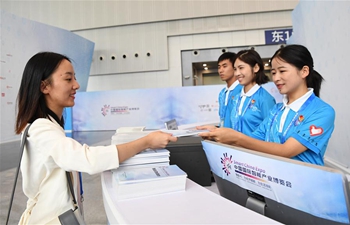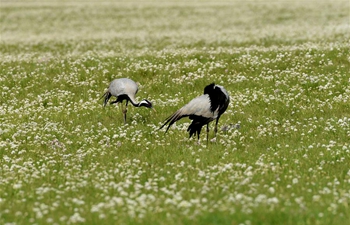WASHINGTON, Aug. 22 (Xinhua) -- American researchers have developed the first global cellular map of a human barrier tissue during inflammation, leading to a novel mechanism that may explain what sustained chronic rhinosinusitis.
The study published on Wednesday in the journal Nature offered an explanation for why some sinus infection patients develop nasal polyps, arising from epithelial cells that line the respiratory tract.
The findings may also have implications on treatment of other chronic inflammatory diseases of barrier tissues, such as asthma, eczema, and inflammatory bowel disease.
Massachusetts Institute of Technology (MIT) and Brigham and Women's Hospital researchers performed rapid RNA sequencing of thousands of single cells in upper respiratory tracts from human patients.
"We saw major gene-expression differences in subsets of epithelial cells which had been previously obscured in bulk tissue analyses," said the paper's senior author Alex K. Shalek, Assistant Professor of Chemistry at MIT.
The new study has revealed that basal cells from patients with polyps had turned on a specific program of gene expression that explains why those cells begin to pile up and form thicker layers instead of differentiating into epithelial cell subsets needed for host defense.
This trajectory appears to be sustained directly by IL-4 and IL-13, two immune response cytokines known to drive allergic inflammation when overproduced at pathologic levels, according to the study.
"When you look across the entire transcriptome, comparing cells from patients with different disease statuses over thousands of genes, you can start to understand the relationships between them and discover which transcriptional programs have supplanted the usual ones," said Shalek. Also, the researchers found these basal cells retain a "memory" of their exposure to those cytokines, so this memory in stem cells may influence their subsequent patterns of gene expression and ability to generate mature specialized epithelial cells.
The findings suggested that ongoing efforts to block the effects of IL-4 and IL-13 might be a good way to try to treat chronic rhinosinusitis, a hypothesis that the researchers validated using an antibody that blocks a common receptor for these two cytokines.
The researchers analyzed the gene expression of basal cells taken from one of the patients with polyps before and after he had been treated with this antibody.
They found that most, though not all, of the genes that had been stimulated by IL-4 and IL-13 had returned to normal expression levels.

















